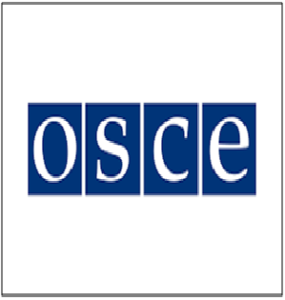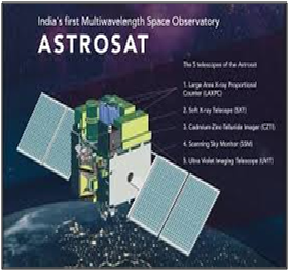(UPSC GS-II – “Governance, Transparency & Accountability”; GS-III – “Technology & Its Applications”)
Context (Introduction)
Digital monitoring tools such as biometric attendance, facial recognition, geo-tagging apps, and photo-based verification are increasingly used in welfare delivery to curb corruption and enforce accountability. Evidence from MGNREGA, PDS, Poshan Tracker and frontline health services, however, shows mixed outcomes and new risks.
Why Governments Are Turning to Tech-Surveillance Tools?
- Accountability-Deficit: Chronic absenteeism, delayed service delivery, and petty corruption push governments toward tech-based enforcement mechanisms.
- Ease-of-Monitoring Narrative: Apps offer the appearance of real-time oversight, creating political incentives to adopt them regardless of their real effectiveness.
- Centralised Control: Digital systems allow higher bureaucratic layers to monitor frontline workers without investing in stronger local governance systems.
- Pressure for Quick Fixes: Complex administrative failures are seen as solvable through simple technological tools, avoiding deeper systemic reforms.
- Perception of Objectivity: Authorities often believe biometrics or photographs ensure foolproof verification, despite evidence of manipulation.
Limitations & Risks of Tech-Fixes in Welfare Delivery
- Manipulation Persists: Digital attendance is routinely gamed (e.g., NMMS photos fudged, ABBA misuse), proving that technology cannot eliminate human collusion.
- Exclusion Risks: Elderly, disabled, and remote beneficiaries struggle with biometric failures, weak connectivity, or app glitches, leading to welfare denial.
- Worker Demotivation: Excessive surveillance erodes dignity of frontline workers, shifting focus from service quality to compliance with app requirements.
- Privacy Violations: Photo uploads of breastfeeding mothers or home visits raise ethical concerns and weaken trust in welfare systems.
- False Sense of Accountability: Monitoring tools check presence, not performance—workers may appear compliant digitally without delivering quality services.
- Administrative Overload: Requirements like “100% verification of photographs” divert attention from program management to digital paperwork.
- New Corruption Channels: Officials can falsely claim “biometric failure” or demand bribes to resolve digital discrepancies.
- Agnotology Concern: The deliberate ignorance of failures suggests vested interests and commercial incentives influencing policy choices.
But Technology Also Offers Meaningful Opportunities
- Improved Transparency: Digital trails, as seen in Andhra Pradesh’s e-PDS system, reduce leakages when paired with community audits, unlike systems relying solely on biometrics.
- Real-Time Data: Apps can strengthen planning — Tamil Nadu’s Integrated Child Nutrition dashboard and Rajasthan’s e-Hospitalsystems show how analytics (not surveillance) can map stock-outs and service gaps.
- Reduced Middlemen: Direct digital records, similar to Kenya’s mobile-money welfare transfers, minimise manual manipulation when interfaces remain simple and staff-friendly.
- Targeted Interventions: Geo-tagging, used effectively in Brazil’s Bolsa Família monitoring, helps locate underserved habitations, enabling more rational deployment of health, nutrition, and sanitation services.
- Complementary Role, Not a Substitute: Technology supports — but cannot replace — local institutional reforms, as demonstrated by Indonesia’s village governance model, where apps assist audits but accountability rests with empowered councils.
Way Forward
- Strengthening Institutions: Empowering local bodies and social audits — as Philippines’ community-driven development model shows — ensures human oversight over digital processes.
- Investing in Workers: Training and supportive supervision, like Thailand’s upskilling of community health volunteers, build responsibility better than punitive surveillance apps.
- Reducing Last-Mile Burdens: Countries such as Estonia cut inefficiency by simplifying workflows before digitising; India must similarly reduce redundant photo uploads and paperwork.
- Context-Specific Design: Uganda’s mHealth projects succeed because apps work offline; India must adapt tools to low-connectivity regions to prevent exclusion of genuine beneficiaries.
- Ethical & Privacy Framework: The EU’s GDPR and Kenya’s Data Protection Act demonstrate how strict limits on biometric and photo-based data protect dignity and prevent misuse in welfare delivery.
- Participatory Technologies: Japan’s model of co-designing municipal apps with users shows that when frontline workers and communities shape the tool, accountability deepens, and compliance becomes organic.
Conclusion
Tech-surveillance tools in welfare may create the illusion of accountability, but without institutional reforms, they often substitute one form of manipulation for another. True accountability requires a shift from coercive monitoring towards cultivating responsibility, professional ethos, and trust within public systems. Technology can enable this journey—but cannot drive it alone.
UPSC Mains Question
- “Digital governance tools promise accountability but often deliver exclusion and surveillance.” Critically analyse the role of tech-based monitoring apps in welfare delivery in India. (250 words)




